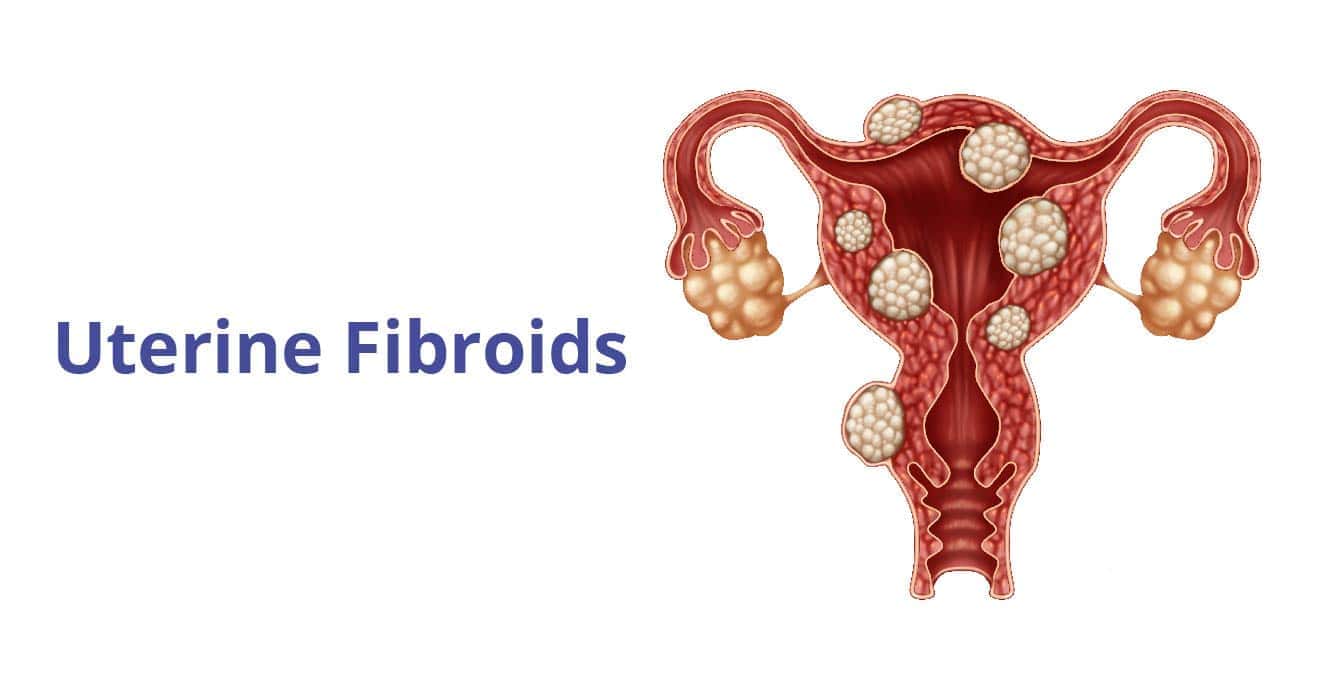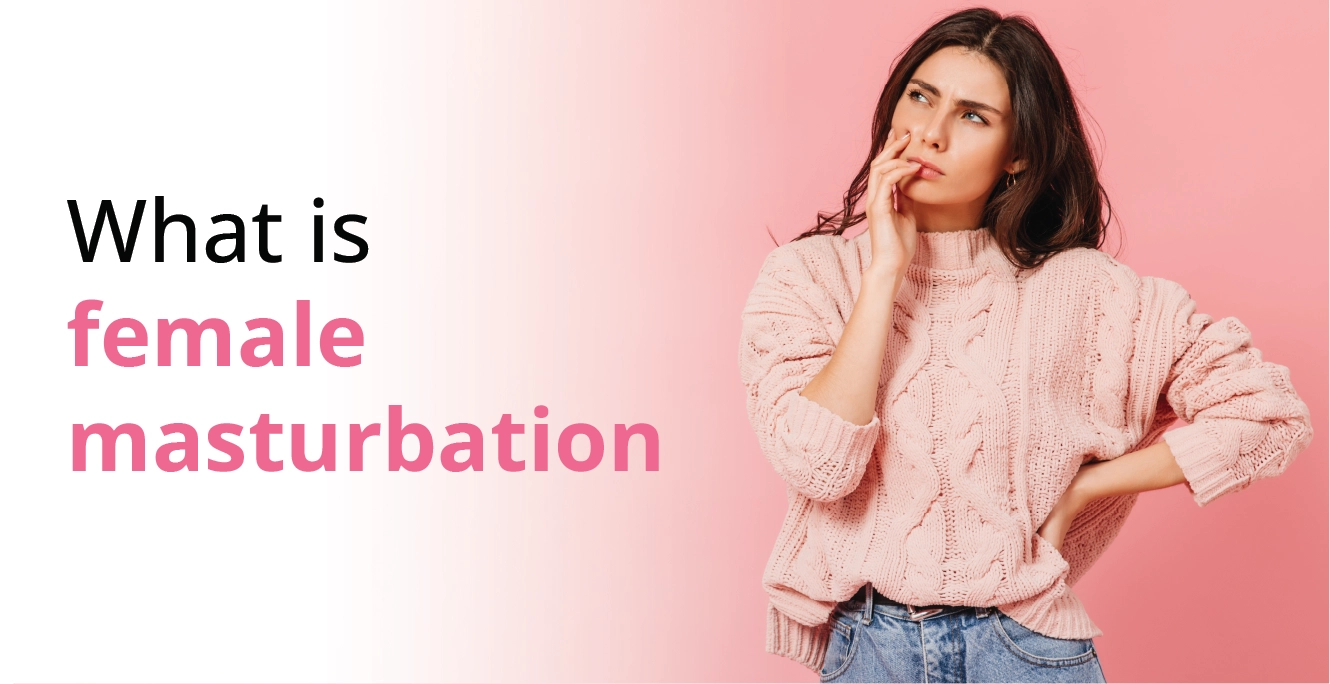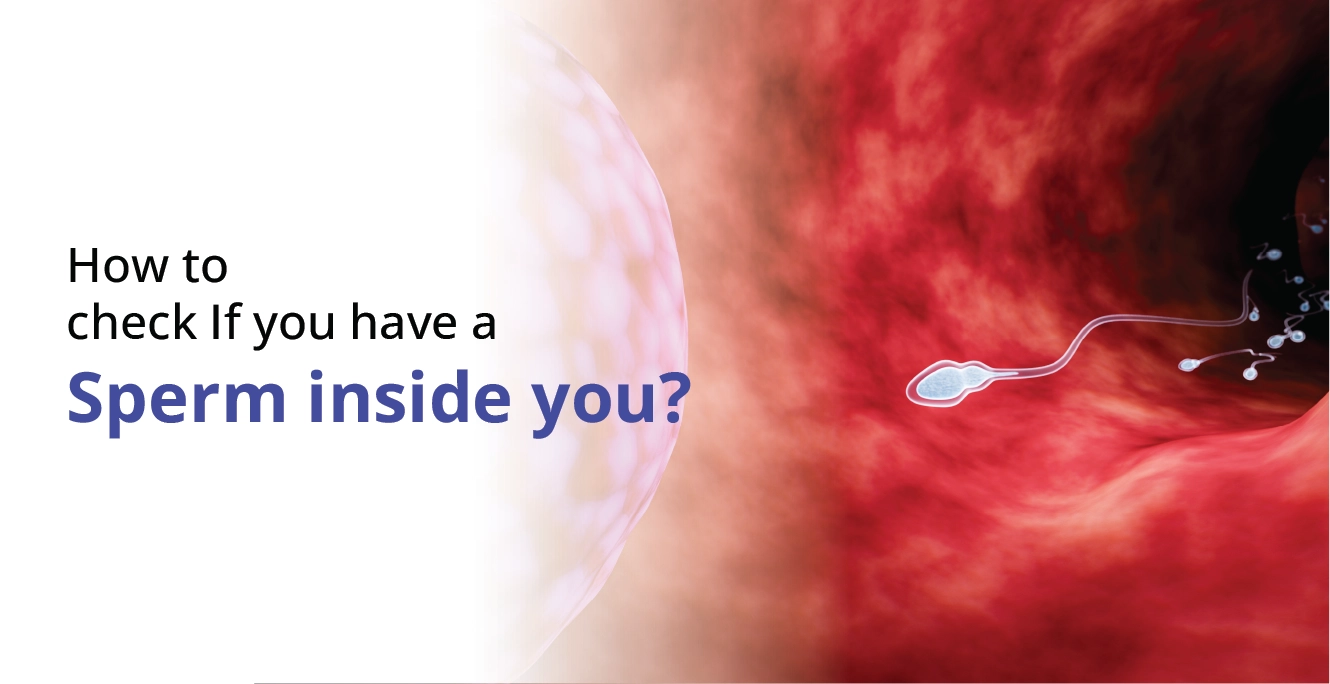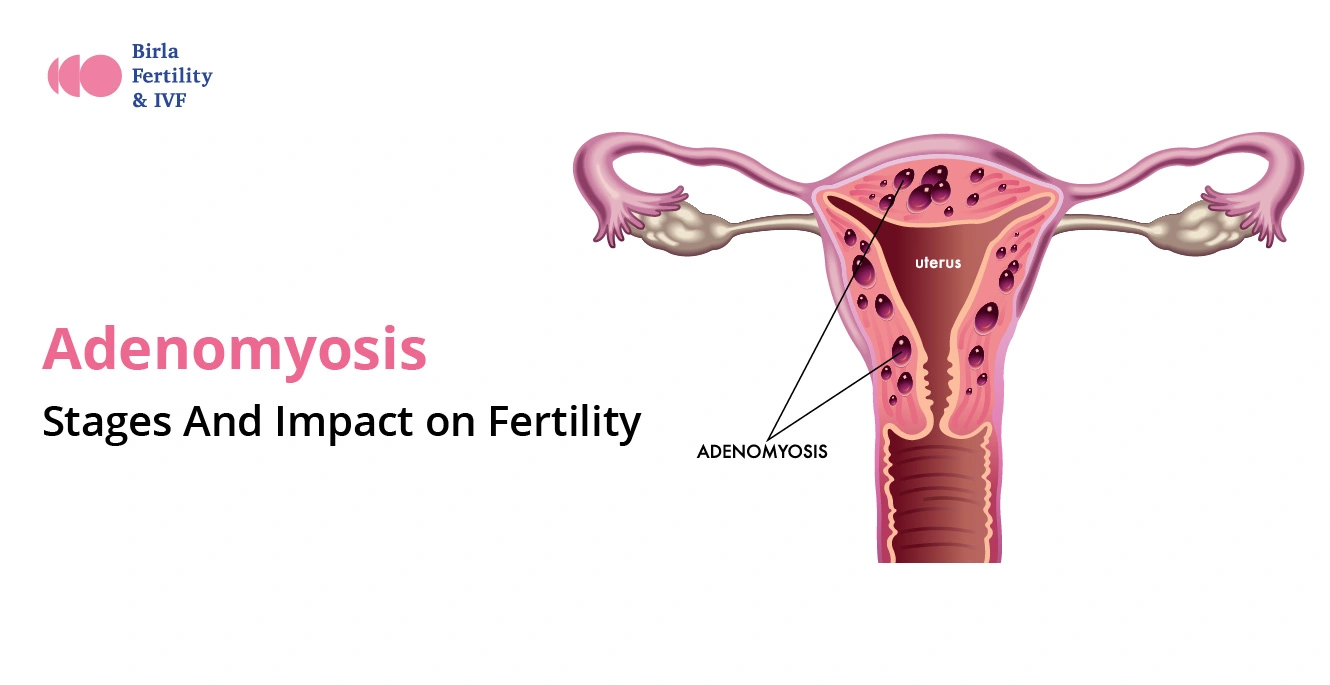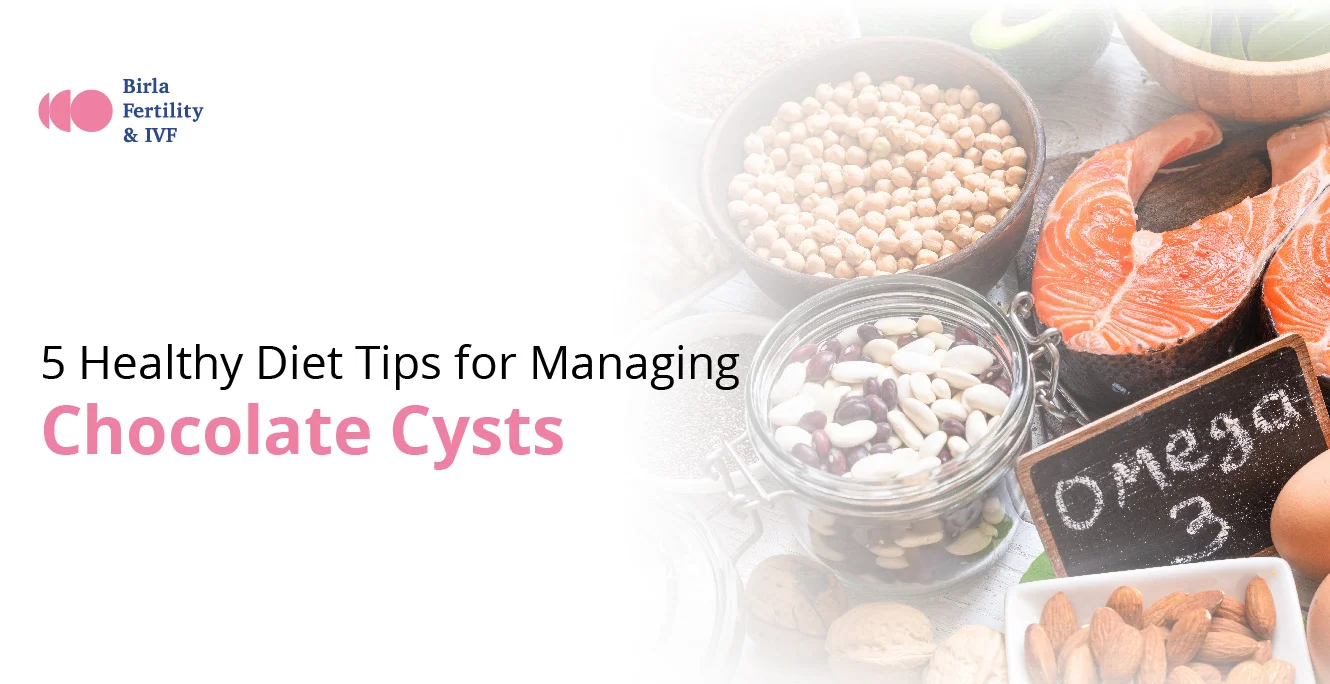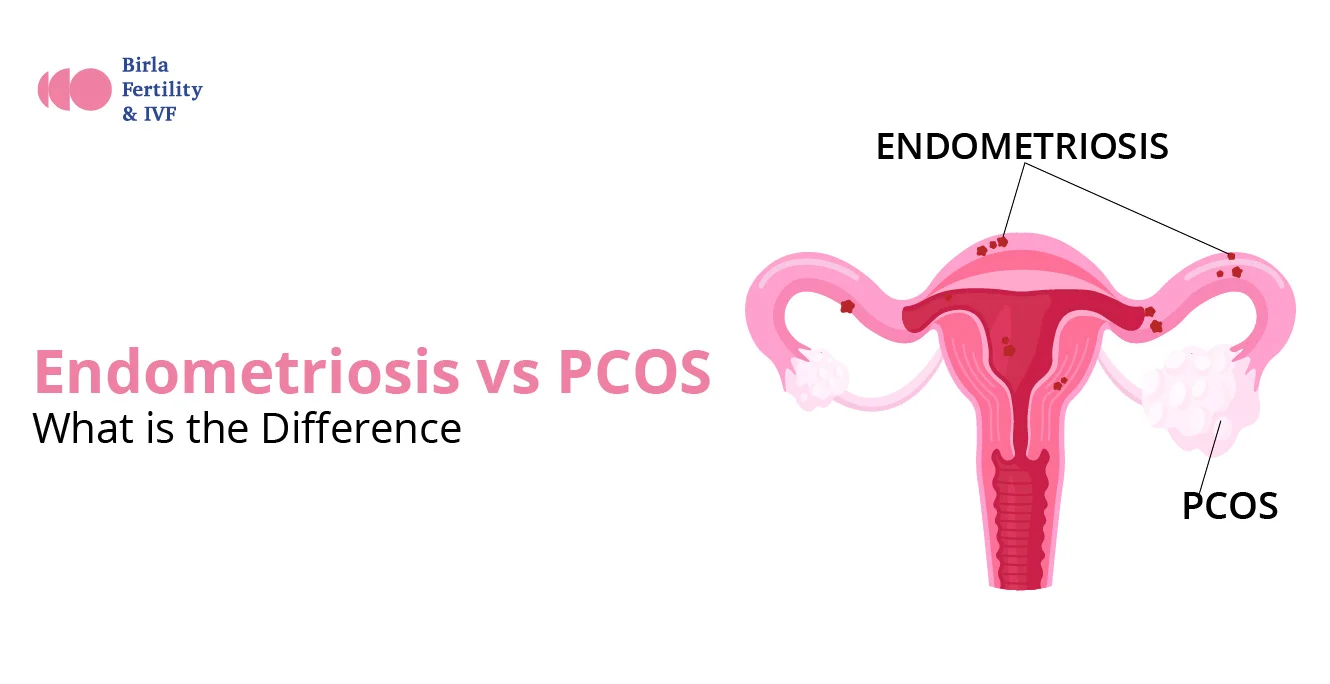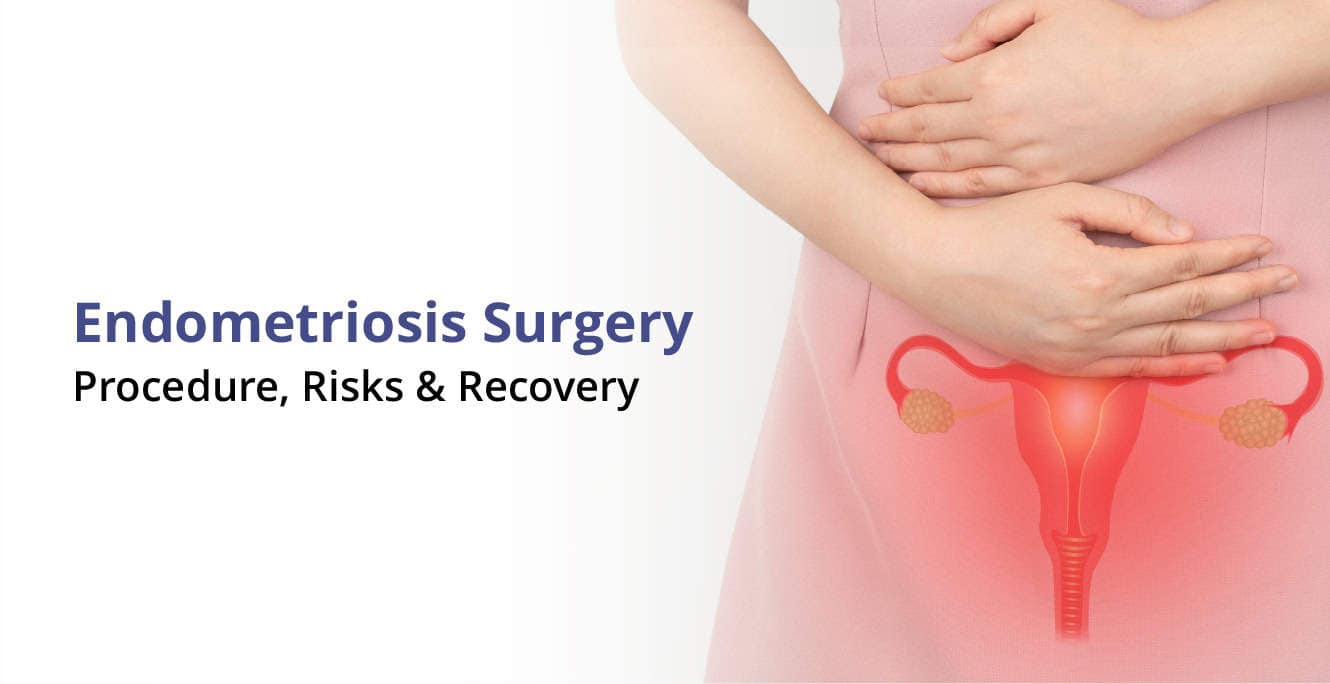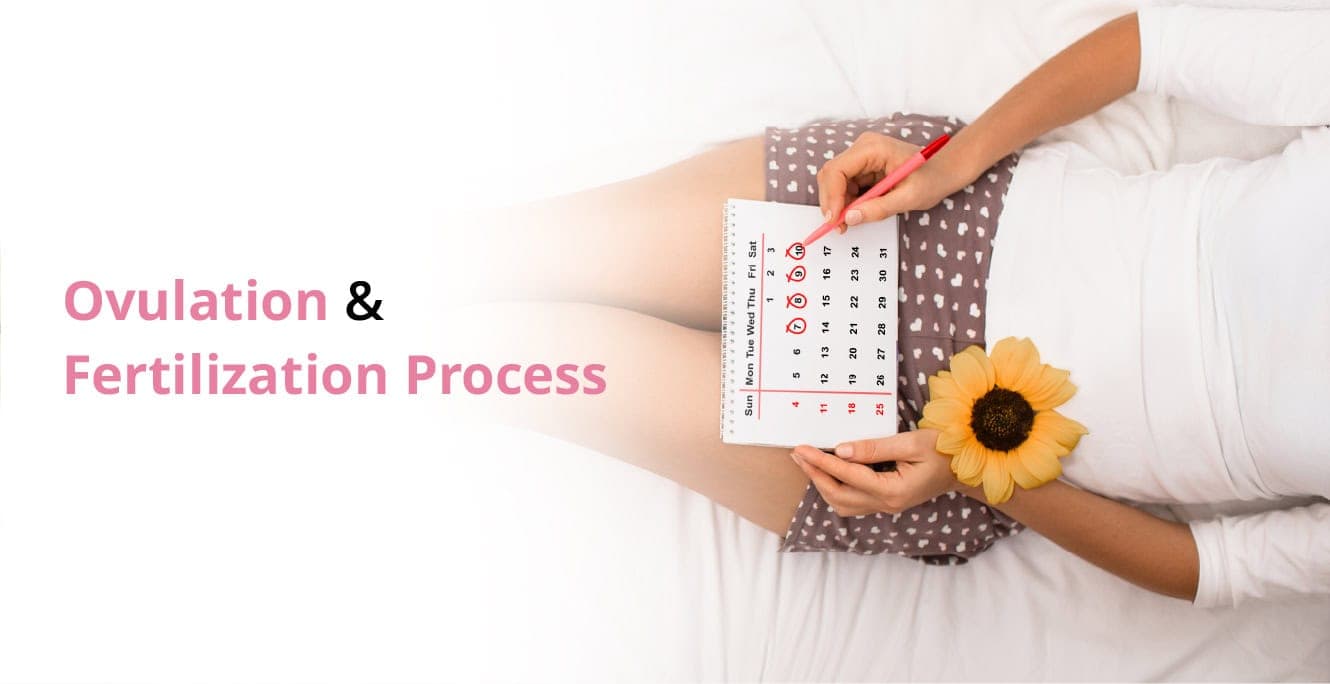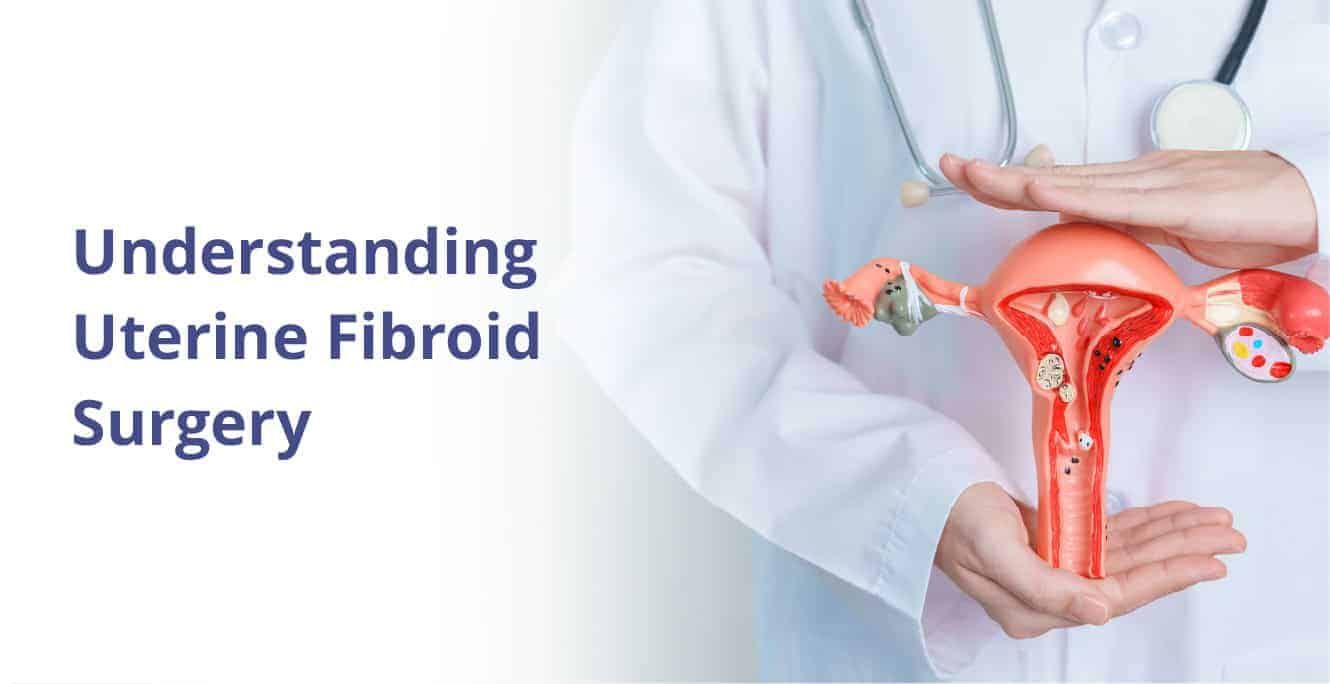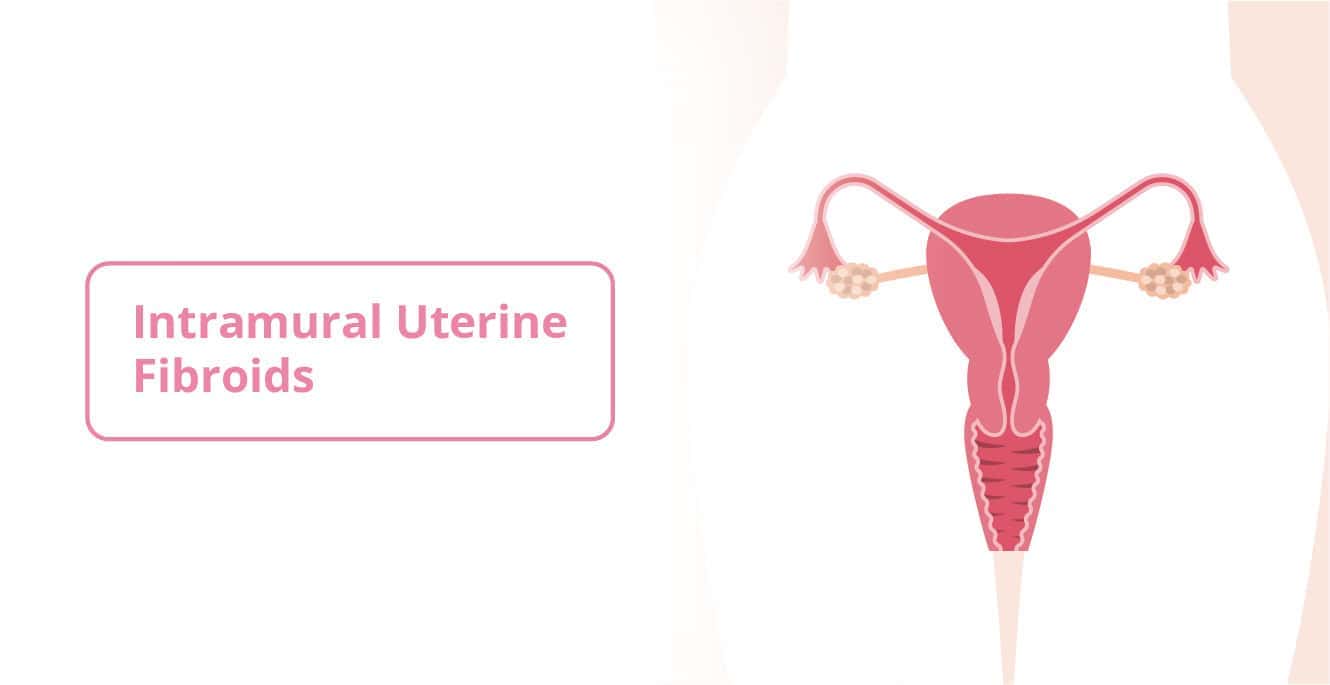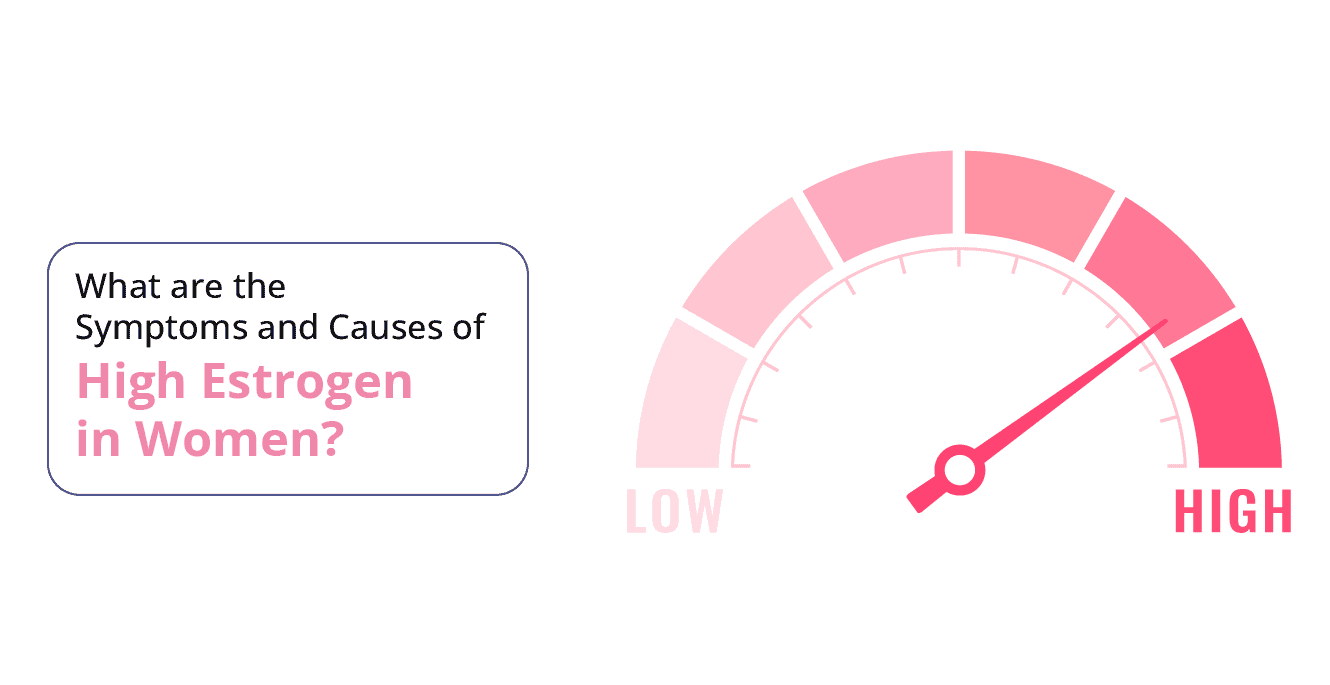Quick Highlights
- Uterine fibroids are non-cancerous growths in or around the uterus, commonly affecting women of reproductive age.
- Symptoms of uterine fibroids may include heavy periods, pelvic pain, bloating, and frequent urination.
- Hormonal imbalances and genetic factors are key causes of fibroids.
- Types of uterine fibroids include intramural, subserosal, submucosal, and pedunculated fibroids.
- Treatment options of uterine fibroids range from medication and lifestyle changes to surgical interventions for severe cases.
- The blog explores causes, symptoms, diagnosis, and effective treatments for uterine fibroids in details covering all the necessary aspects.
A fibroid is a growth or tumour that is not cancerous and does not come with an increased risk of cancer. Uterine fibroids are small growths that develop in the uterus. It is also called a leiomyoma. Approximately 20% to 50% of women of reproductive age have fibroids, and it is estimated that up to 77% of women who have children will develop fibroids at some point.
What are Uterine Fibroids?
- A fibroid is a growth that is made up of smooth muscle cells and fibrous connective tissue. A uterine fibroid is a growth that develops in the uterus.
- Your uterus is a small organ in your pelvis, in the shape of an upside-down pear. It is where the foetus grows and develops during pregnancy. The fibroid is usually detected in the wall of the uterus.
- Fibroids are often discovered during a pelvic exam or imaging scan, and depending on their nature, they may require medications or surgery to remove them.
- Uterine fibroids go through different growth patterns. Some may stay the same while others grow at different paces. In most cases, fibroids reduce in size after pregnancy.
Uterine Fibroid Size Chart
The size of uterine fibroids may differ from one patient to another based on the severity of the condition. Refer to the below table to under the classification based on the size and measurements:
| Fibroid Size | Measurements |
| Small uterine fibroid | Less than 1-5 cm |
| Medium uterine fibroid | 5-10 cms |
| Large fibroid | 10 cm or more |
Uterine Fibroids Symptoms
While fibroids may exist without any symptoms, these are some fibroids symptoms that you should look out for:
- Heavy or painful bleeding during menstruation
- Bleeding between periods
- Heaviness or bloating in the lower abdomen
- Frequent urination
- Pain experienced during sex
- Lower back pain
- Constipation
- Continuously thick vaginal discharge
- Difficulty in passing urine
- Abdominal swelling, causing the abdomen to appear pregnant
- Periods lasting more than a week
- Pressure or pain in the pelvic region
Causes of Uterine Fibroid:
Uterine fibroids develop in women during their reproductive years. While the exact reason behind their formation remains unclear, researchers have identified several contributing factors that may explain what causes uterine fibroids to grow:
- Abnormal stem cell growth – a single stem cell in the smooth muscle tissue of the uterus multiplies to form a mass of cells or tissue that is clumped together
- Hormonal effects – during a woman’s menstrual cycle, the uterus lining is thickened in preparation for pregnancy, and estrogen and progesterone are two hormones that promote this development
- Growth-inducing substances – substances that help grow tissues (growth factors) may contribute to the growth of fibroids
Types of Urine Fibroids:
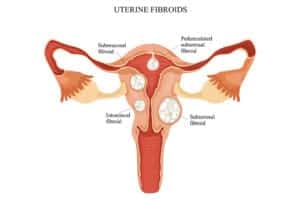
There are 4 main types of fibroids:
- Intramural fibroids: An intramural fibroid is the most common type of fibroid and forms in the muscular tissue that makes up the wall of the uterus.
- Subserosal fibroids: This type of fibroid grows on the outer membrane of your uterus. Because it forms on the outer walls of the uterus, the smaller ones may not cause serious symptoms.
- Pedunculated fibroids: When a subserosal fibroid forms a stem, a tumour may grow upon this stem. The tumour that forms is called a pedunculated fibroid.
- Submucosal fibroids: Submucosal fibroids form in the middle layer of muscle in the uterus, which is called the myometrium. They are a less common variety of fibroid. Submucosal fibroids grow inside the uterus and into the uterine cavity.
Risk Factors for Developing Fibroids
- Genetic Factors: Gene mutations can cause the formation of uterine fibroids. This condition can also be inherited from close relatives. If members in your family have had fibroids, there is a higher chance of you being affected as well.
- Lifestyle Factors: A sedentary lifestyle that promotes obesity is also considered responsible for uterine fibroids. If you are overweight, chances are that you can develop this condition.
- Hormonal Imbalances: Hormonal imbalances can be attributed to uterine fibroid causes. An imbalance in the levels of estrogen and progesterone can trigger this condition. These hormones are also responsible for stimulating the development of the uterine lining.
- Age: Fibroids can affect women within the reproductive age group. Women who are yet to reach menopause and are above the age of 40 have a higher prevalence of fibroids.
Fibroid Complications
Fibroids can lead to certain complications. These include:
- Complications during pregnancy – these could be placental abruption, interrupting the growth of the foetus, and interfering with smooth delivery
- Pain during intercourse – fibroids may lead to pain in the lower abdomen during intercourse
- Reduced red blood cells (anaemia) – this is usually due to blood loss
- Severe blood loss – this happens in rare cases and may require a transfusion
- Infertility – in rare cases, fibroids can affect a woman’s fertility
Uterine Fibroids Prevention
The ways to prevent fibroid tumours are not certain. A healthy and balanced diet, regular exercise, and weight maintenance can reduce your risk of developing fibroids
Getting regular pelvic exams also helps to lower your risk.
Uterine Fibroids Treatment & Testing
Pelvic Exam
Doctors can identify the presence of fibroids by performing an internal examination of the pelvis. A pelvic exam is a manual analysis in which a medical doctor inserts two fingers into your vagina opening and presses your abdomen to get an idea of the shape and condition of the uterus. If you have fibroids, your uterus might seem larger or abnormally shaped.
If your doctor suspects that you may have fibroids, they may order the use of imaging techniques such as an ultrasound or MRI to get a better view of your uterus.
Ultrasound Scan
Ultrasound scans include using high-frequency sound waves to get a clear image of the fibroids in the uterus. The size and shape of fibroids are identified using this technique.
MRI (Magnetic Resonance Imaging)
Like ultrasound, MRI uses magnetic waves to create a better image of the internal body parts. MRI is used if you have a large uterus and if you are approaching menopause.
If these methods do not help diagnose your condition, other invasive methods including laparoscopy, hysterosonography, hysterosalpingography and hysteroscopy can be used.
Do Fibroids Cause Infertility?
A diagnosis of fibroids does not necessarily mean that you will face infertility due to this condition. However, fibroids can be a possible reason for sub-fertility or cause difficulty in conception, based on their type and size.
Large-sized fibroids projected inside the uterine cavity can affect the natural process of fertilisation of an egg and sperm in the uterine cavity. They can also hamper the implantation of the embryo leading to conception difficulties.
Some complications caused due to fibroids include:
Concerns During Conception
- Uterine fibroids can cause problems related to fertility based on their shape, size and location inside the uterus.
- If you have large fibroids, they could block the fallopian tubes and make it difficult for an egg to fuse with sperm.
- Fibroids can change the shape of the cervix and affect the number of sperm entering the uterus.
- If there is a change in the shape of the uterus, the movement of sperm or embryo towards the uterine wall will face obstacles.
- Blood flow to the uterine cavity can also be affected. This can decrease the ability of an embryo to implant in the uterine wall or to develop.
Concerns During Pregnancy (after conception)
- Fibroids can cause complications during pregnancy and delivery. These complications are associated with the obstruction caused in the uterine cavity due to the growth of fibroids.
- Large fibroids can cause restrictions in the growth of the baby, restricting the baby to not grow to its normal size.
Preterm Delivery
- Pain from fibroids causes uterine contractions leading to preterm delivery.
- Based on your physical condition and the doctor’s analysis, fibroids are removed to avoid early delivery.
Require Delivery Using a Cesarean Section
- Fibroids can change the baby’s position in the uterus and cause problems during delivery. In such a situation, a cesarean section might be needed.
Miscarriage
- The baby is connected to the mother via placenta. The placenta can break away from the uterine wall due to blockage caused by a fibroid.
These are some of the complications that could arise due to fibroids. It is highly recommended that you consult your doctor as soon as you discover atypical symptoms. Every woman’s fertility journey is unique and treatment must be administered accordingly.
When to See a Doctor?
You may not know if you have a uterine fibroid because they don’t always show symptoms. Here are some symptoms of fibroids that you should watch out for:
- Persistent pelvic pain
- Extended periods, continuously heavy or painful periods
- Bleeding continuing between periods repeatedly
- Persistent trouble with passing urine
- Low red blood cell count for no perceivable reason
Signs that you need to see a doctor immediately are:
- Excessive bleeding
- Sudden and sharp pelvic pain
If you notice any of these symptoms, consult a specialist so that you can get the treatment you need immediately.
Conclusion
Uterine fibroids are not always a cause for concern. In case there are no severe symptoms, you can undergo regular monitoring by a gynaecologist to keep a check on the fibroid. If you experience severe or persistent symptoms that cause discomfort, see a gynaecologist or expert OBGYN as soon as possible.
For an accurate diagnosis, regular monitoring and the best treatment for uterine fibroids, consult the best doctors at Birla Fertility & IVF.
FAQs
What Happens When Fibroids Go Untreated?
In many cases of uterine fibroids, women experience no symptoms or only mild symptoms. Fibroids are not cancerous, and it is only in rare cases that they interfere with pregnancy. In such cases, not treating a fibroid may not be an issue as it can be lived with. It is also likely that it will reduce in size after menopause as the production of reproductive hormones falls. You can also develop a plan with your doctor to monitor the fibroids.
Medications for fibroids are usually for hormonal control and seek to regulate the menstrual cycle to deal with symptoms like heavy bleeding. They can help reduce the size of the growth but will not remove it.
Do Uterus Fibroids Need to Be Removed?
Uterus fibroids don’t necessarily need to be removed. Especially for smaller growths, if they are not causing any symptoms, you can follow a watchful waiting approach. Your doctor may also suggest this approach if the symptoms are tolerable.
In this approach, the doctor monitors your symptoms and keeps a watch on the fibroid growth.
When Should You Worry About Fibroids?
Fibroids can be a cause of concern when they cause serious symptoms like consistently extended periods, severe blood loss, and sharp pain in the abdomen or pelvic area.
At What Size Should Fibroids Be Removed?
The size and exact location of a fibroid in the uterus will be considered when determining if it needs to be removed. The larger the size of the, the more likely that it will need to be removed.
Can Fibroids Give You a Big Belly?
Fibroids can cause abdominal swelling and make your stomach appear bigger or bloated.
Can Uterine Fibroids Cause No Period?
Fibroids are abnormal muscle tissue growths that form on the uterine walls. These abnormal growths are also known as uterine fibroids. The shape, size, and structure of uterine fibroids might vary depending on the severity of the condition. In most cases, these growths are the result of a hormonal imbalance, and hormonal fluctuations can cause irregular periods.


